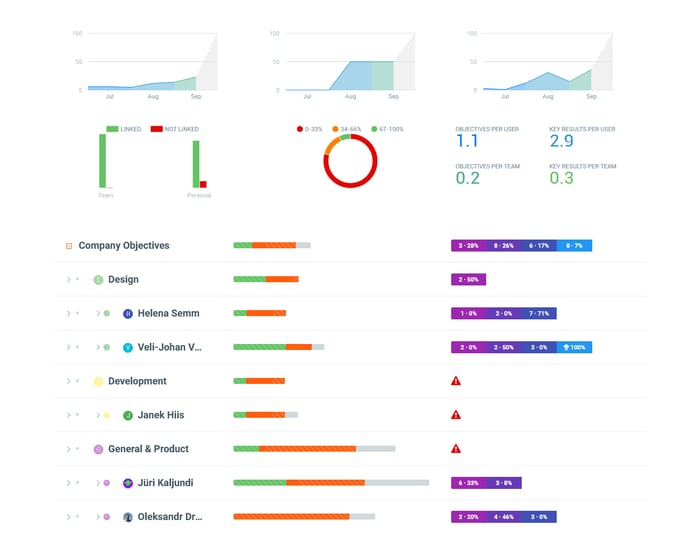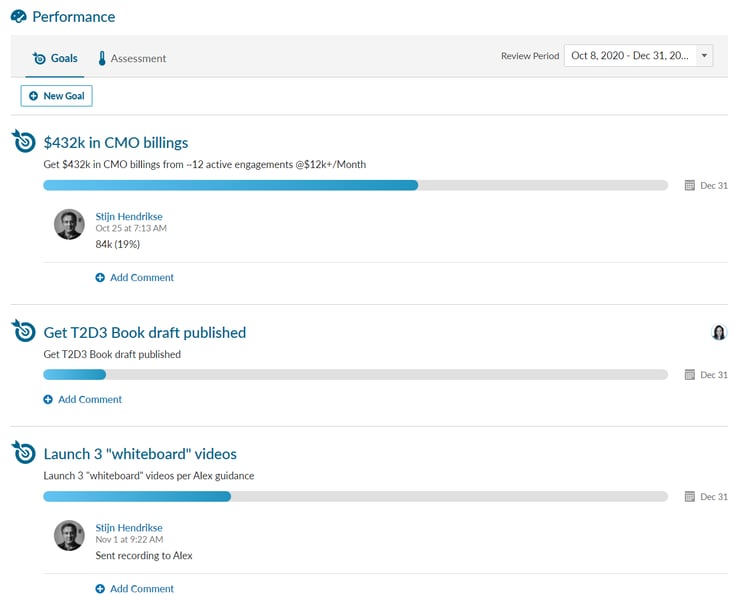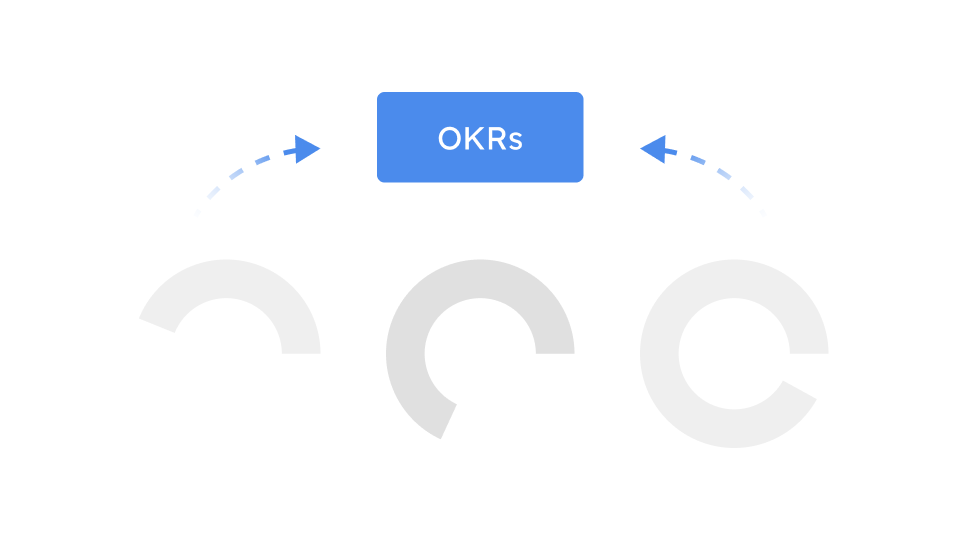As 2021 is showing itself to us with all its opportunity to leave the darkness of 2020, I’m working with many of my team members on their OKRs for Q1 of the new year.
A common question that I get from other B2B SaaS Chief Marketing Officers is what tool to use when tracking your OKRs.
Less is more when you’re getting started with OKRs
With most of my clients, I don’t use tools to track OKRs - I simply use a spreadsheet. It’s a great way to make sure the focus is on the quality of the OKRs, and not on the technology to support them.
The below example is from 2020. I prefer to add “Action steps” or Actions to support the Key Results. It helps prevent the common pitfall in writing good OKRs where people mistakenly list Actions/To-dos as Key Results. On the T2D3 website, you can find an OKR template like the one below with a lot of additional functionality. If you're looking for the right Key Results to add into your OKR tracker, here is a list of 50+ SaaS Marketing OKRs you can use to get started.

The challenge with using anything more complicated than a spreadsheet is that implementing, training and the dependency (and cost) can take away from the power of OKRs. For this reason, even global corporations like Google use spreadsheets.
But sometimes, it makes sense to invest in a special tool. Following are a couple of examples that I’ve worked with.
Tools to automate and scale OKRs
Some good reasons to move toward a more sophisticated toolset are:
- You want to publish OKRs in a larger organization and make it easy for everyone to find, understand, and connect OKRs from other people and teams.
- A tool helps you track OKRs over time, and supports reporting automation and dashboards.
- If used right, tools can help hold people accountable through reminders, proactive reporting, and benchmarking.
- While not the best reason, sometimes investing and spending money on a tool will make leadership take implementing OKRs more seriously.
There are many other reasons to use a more sophisticated tool for tracking your OKRs. Just bear in mind that getting started with OKRs and getting your team familiar with the principles, in my opinion, is best done on a simple piece of paper or spreadsheet.
Here are a couple of OKR tools I’ve used:
Pro: Priced at $94.80/user/year, you get a lot of value if you use the weekly planning tools and have team-level OKRs that you want to track in a more sophisticated manner.
Con: If you just want to do OKRs at the individual level, I’ve seen the team get “lost” in the complexity every time. I’ve implemented this with 4 clients...and it was the same everywhere...we lost about one quarter to get used to the tool...

Pros: BambooHR is integrated with a complete HR system and Performance Management. This tool uses a quarterly focus, and has an easy-to-use, simple and clean UI.
Cons: Uses traditional Goals, you're unable to score >100% on a single “Key Result”, and you're unable to share/publish goals without co-owning them with others.

I have no hands-on experience with Perdoo, but they are leading the way in OKR education. Based on the quality of the content and what I can find on their website, this is a great toolset focused on OKR management. Pricing for this OKR tool seems to be in line with comparable solutions at $86.40/user/year.
This was the first tool I got exposed to, about 7 years ago. I think it’s the most complete solution, but it’s also very expensive. At that time, my client chose to go with a cheaper solution. My perception is that the price can be warranted if you need all kinds of sophisticated enterprise features. But, my gut says you can find just as much for a better price with Weekdone.
OKRs for B2B SaaS marketing teams
To summarize, my preference is to use a simple organizational tool such as a spreadsheet with the clients we typically work with, B2B SaaS Companies that are still in the early stages of their growth. If you get bigger, and OKRs become a fundamental instrument to “tie” the organization together, tools like Weekdone and Perdoo can be worth exploring. I don’t have experience with any other tools.
To get started on your own set of marketing OKRs, see this blog I wrote for more context, examples, and a template. You can find other good examples of Marketing OKRs below:
For completeness, here is an example that I don’t think is best in class. These Key Results are more describing action items, not outcomes. A common mistake in OKR writing marketing OKRs:
The following OKRs are decent, but I’d change the % metrics into absolute numbers:
Holding your B2B SaaS Marketing Agency or SaaS Fractional CMO Accountable
Finally, here are a couple of articles to help you hold your B2B SaaS marketing agency or B2B SaaS Marketing leader accountable:
Lastly, check out our podcast for B2B SaaS CMO’s on using OKRs.
